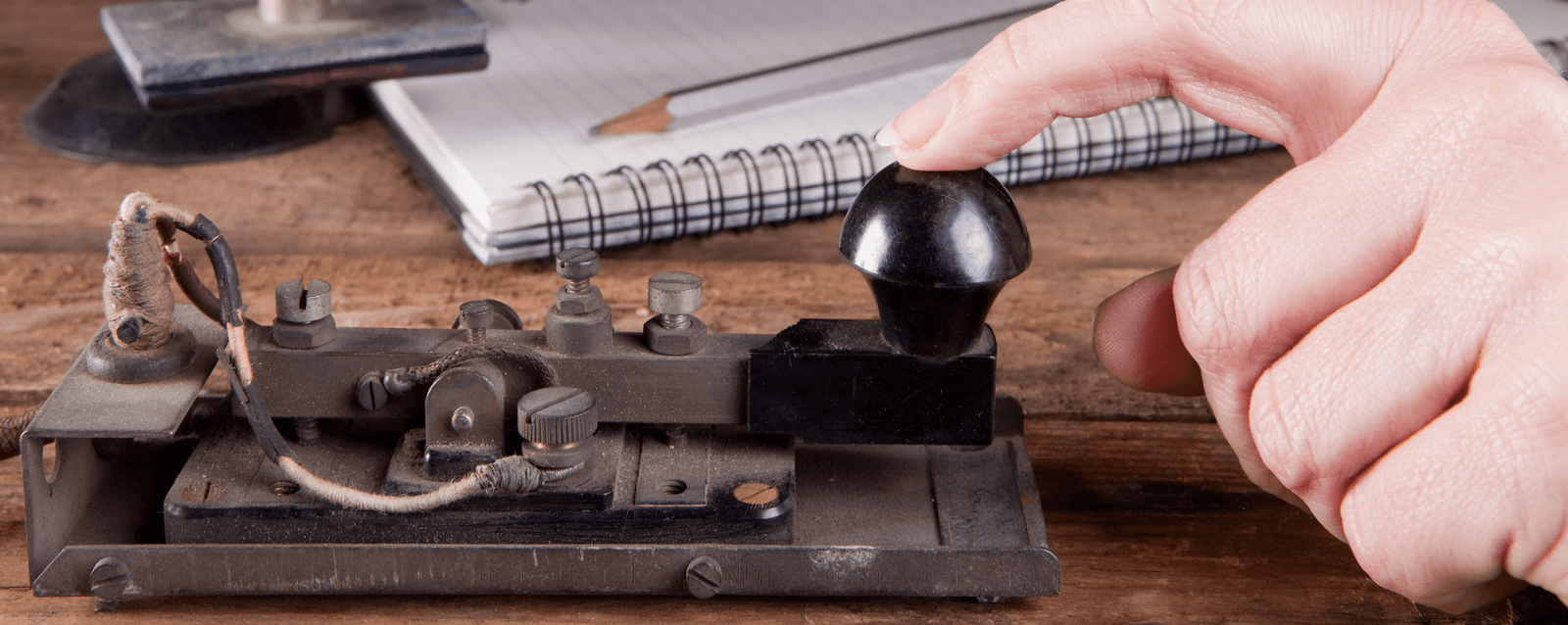How to Learn Morse Code
- Home
- Morse Code
- How to Learn Morse Code
Why Learn Morse Code?

Learning Morse code can seem like an unusual hobby or skill in today's digital age. However, Morse code can be a valuable - and sometimes life-saving - tool for communication in certain situations, as it can be used as a way to communicate in emergencies when traditional forms of communication, such as cell phones or radios, are not available.
Additionally, it is still used by some amateur radio operators, and is a useful and interesting subject for those interested in the history of communication technology. It can also be used to convey a hidden message, such as in a Morse code bracelet for instance.
Not only this, but learning morse code can be used as a mental exercise and can help with developing skills such as memory, focus and attention to detail. Just like learning a new language, it can be a fun way to challenge yourself and acquire a new skill which may just come in handy one day in the future.
In short, learning morse code, rather than relying on a Morse code translator all of the time, can be a fun and practical skill to learn for those interested in emergency preparedness, history, mental exercise or simply for the challenge of learning something new.
How Do I Learn Morse Code?
The below six steps provide advice and guidance to help you learn Morse code:
1. Learn the basics of Morse code
Before you can start sending and receiving messages in Morse code, you will need to learn the basics of the code. This includes learning the letters and numbers, as well as special characters such as the period, comma, and question mark.
This first step is essential before you can move on to the more advanced steps below which will help improve your proficiency and speed in both sending and deciphering Morse code messages.
2. Study the sound and rhythm of Morse code
One of the most important aspects of learning Morse code is understanding the sound and rhythm of the code. Each letter and number has a unique sound and rhythm, and it's important to become familiar with these sounds and rhythms so you can easily recognize and send messages in Morse code.
3. Practice sending and receiving messages
Once you have learned the basics of Morse code and have become familiar with the sound and rhythm of the code, it's time to practice sending and receiving messages. This can be done with a partner or by using a Morse code practice software or app.
4. Use flashcards and other learning tools
Flashcards and other learning tools can be a great way to memorize the letters and numbers of Morse code. These tools can also be used to help you practice sending and receiving messages in Morse code.
For example, why not try it will the cards first, and then try without it? Or, try sending or receiving a message without them and, if you get stuck, refer to the card for help.
5. Listen to recordings of Morse code
Listening to recordings of Morse code can help you become familiar with the sound and rhythm of the code. This can be done by listening to recordings of real messages or by listening to recordings of individual letters and numbers. It may not be as interesting as the latest chart song, but again, just like learning a language, listening to it can greatly speed up the process.
6. Practice regularly
Practice is essential to learning Morse code. The more you practice, the better you will become at sending and receiving messages in Morse code. Even when you become proficient in Morst code, it is important to practice every so often to prevent you forgetting what you have learnt.
Tips for Learning Morse Code
The six steps above outlined the process for learning Morse code, but also take a look at the below three tips which are necessary to keep in mind and will help you learn Morse code even faster, and (hopefully) prevent you from getting to stressed or disheartened along the journey!
1. Start with the most frequently used letters
The most frequently used letters in the English language are E, T, A, O, and I. Start by learning these letters first, as they will be, unsurprisingly, the most frequently used letters in your Morse code messages.
2. Take it slow
It's important to take your time when learning Morse code. Don't try to learn too much too quickly. Instead, take your time and focus on mastering one letter or number at a time.
Mastering any new language is a slow and difficult task, and you want to get it right rather than having to re-learn things to correct your mistakes, so work carefully and methodically as you progress. This will also prevent you from getting confused and stressed over all of the new information you are taking in.
3. Use mnemonics to remember the code
Mnemonics are memory aids that can help you remember the letters and numbers of Morse code. For example, you could use the mnemonic "Every Tom Ate Oranges" to remember the letters E, T, A, O.
